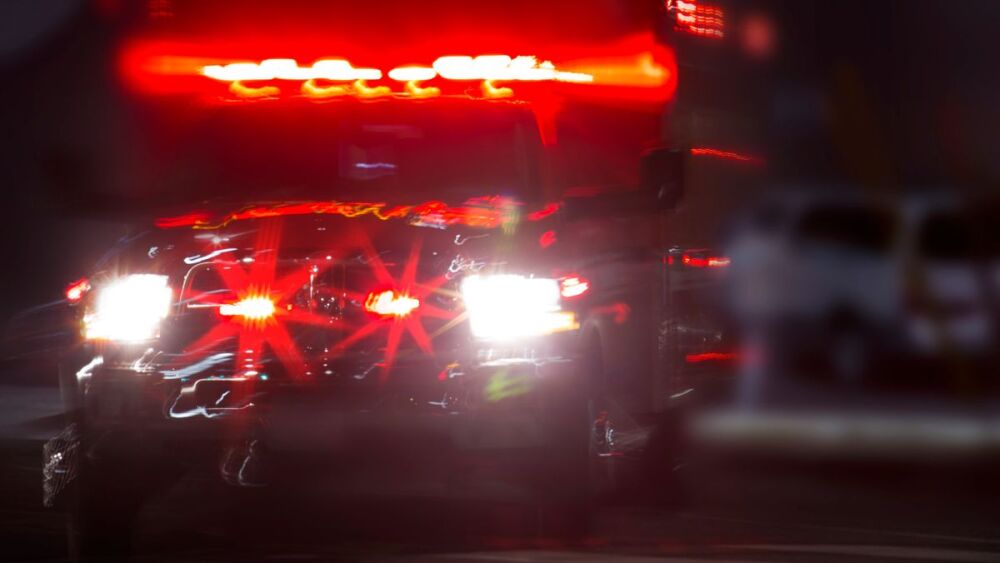Access this on-demand webinar by completing the “Get Access to this SAąúĽĘ´«Ă˝ Resource” box on this page!
Thousands of fire and EMS workers have visited U.S. hospital EDs in the past decade to treat injuries resulting from patient violence. Drexel University’s Center for Firefighter Injury Research and Safety Trends (FIRST) has studied this violence, focusing on common causes and prevention methods. From there, the Center developed the Stress and Violence in fire-based EMS Responders (SAVER) Systems-level Checklist.
In this webinar, the FIRST Center team details the checklist, and explains how it shifts the onus of safety and health from that of the individual first responder to the organization by focusing on actions that the leadership team can institute through training, policy, and environmental modifications. They further unpack the issues of violence against fire and EMS responders and share simple steps for violence prevention.
Note: This webinar contains three videos of workplace violence that include language and images that some may find offensive. Viewer discretion is advised.
WHAT ATTENDEES LIKED FROM THIS PRESENTATION:
“The instructor’s energy was contagious, she really believes in the information provided. Dynamic and informative.”“A fantastic panel of experts and great data with action items.”
“I thought this was an excellent webinar and I really enjoyed the content that was given.”
“Incredible wealth, depth and breadth of much-needed information. So well organized. Thank you!”
Meet the panelists
Dr. Jennifer Taylor is the director and principal investigator for the FIRST Center. She has been trained in the field of injury prevention and control, and uses its principles to address safety issues in first responder and healthcare industries. Specific to first responders, Dr. Taylor applies her surveillance and safety climate expertise to the U.S. fire and rescue service, investigating the relationship between safety culture and injury risk. This has been a natural extension of her patient safety work, as many of the factors that impact medical care are found in the fire service.
Kelly Adams has been employed by the Detroit Fire Department since 2003 as an EMT-B. She is also a trained firefighter and a peer counselor as well as a member of Local 344. In 2014, Adams became a field training instructor to help firefighters transition to be medical first responders. On Oct. 20, 2015, while she was working Medic 6, Kelly and her partner responded to a medical call just before midnight regarding a woman with a hurt ankle. While Adams was assessing her patient, the patient’s boyfriend attacked Adams’ partner with a boxcutter. Adams and her partner sustained life-threatening stab wounds that night. Adams now works with the FIRST Center to prevent future violent encounters to other first responders.
Ben Vernon has served as a firefighter/paramedic with the San Diego Fire Rescue Department for over a decade. He’s a member of the Hazardous Materials and Technical Rescue Teams, the FEMA California Task Force Eight Urban Search and Rescue Team, and holds five specialist positions. On June 24, 2015, while responding to a “routine medical assistance” call, Vernon was stabbed multiple times by a bystander. The incident led him to become a champion for first responder PTSD recognition and treatment. He now travels the country to share his story to help others, while still continuing to serve his community from Station 14.
Grady Valencis is a Deputy Director of Health and Safety Operational Services with the International Association of Fire Fighters (IAFF), serving since 2019. In this role, Valencis is responsible for leading IAFF-sponsored health and wellness initiatives, including those related to violence prevention and behavioral health. He served for 26 years with the Prince George’s County (Maryland) Fire and EMS Department and retired as a battalion chief.
Lieutenant Diane McKinsey is a paramedic with the City of Philadelphia Fire Department. Starting her career as an EMT, McKinsey now has 25 years of experience as a field medic, as a National Fire Academy instructor, and as a PFD administrator. McKinsey is the first woman to serve on the IAFF Local 22 executive board. She is a strong advocate for workplace violence prevention and behavioral health resources in her department, working closely with the FIRST Center as PFD champion in the Stress and Violence to fire-based EMS Responders (SAVER) study.
Kenny Stuart has served as a Seattle firefighter since 1996 and is a lieutenant on Ladder Company 8 in Ballard. He is president of the union and co-chair of the Coalition of City Unions and a director of the Executive Board of MLK Labor; serves as a board member for the Seattle Fire Fighters HealthCare Trust, the WSCFF MERP, the Seattle’s Bravest Charity and the Fire Foundation.
Deputy Chief Yonatan Klein has served the FDNY since 2007 and has been assigned to South Queens as an EMT and paramedic. He was assigned to EMS Academy and became an instructor coordinator, helping in the initial stages of high-fidelity training. He was appointed to the rank of EMT in 2007, promoted to paramedic in 2009 and promoted to lieutenant in 2014. In October 2015, he was assigned to the Safety Command’s Research and Development Unit, promoted to captain in 2020, and deputy chief in 2022, assigned to Manhattan. Klein serves as the field liaison to R&D, a trained fatal incident and collision investigator, and an NYS CIC.












